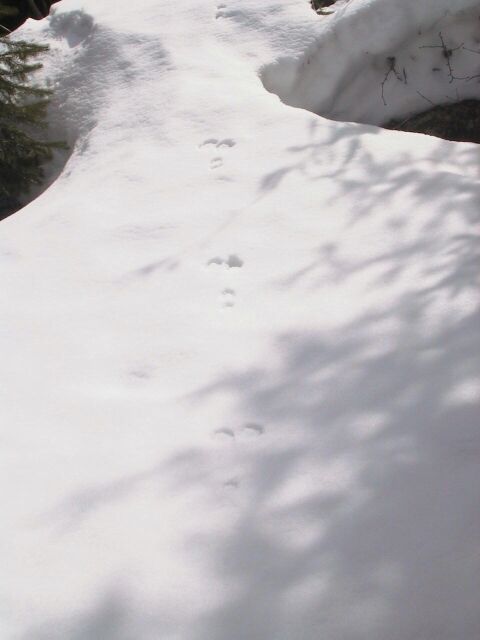
Organizer. Al Thieme, Cascadia Wild!
Location. Mt Hood National Forest (east of Portland, Oregon).
Purpose. One goal was public education--to introduce volunteers to the art of tracking and to promote a greater appreciation of the natural world. Another goal was to assist Oregon Fish and Wildlife and other agencies in determining the existence and distribution of lynx and other forest carnivore such as pine marten on Mt. Hood.
Participants. Volunteer trackers primarily from Portland, Oregon.
Approximately 100 volunteers attended an evening classroom session and a weekend field trip in December 2000 to learn the basics of tracking. Naturalists from Cascadia Wild! and Metro, along with experienced trackers from the community, helped train the volunteers. Over the winter volunteers were expected to participate in a census on at least two weekends. The training was repeated in December 2001 and a new census started in the Gifford Pinchot Forest of southern Washington. A third round of volunteers were recruited in November 2002.
On the day of the census, teams of trackers and volunteers would snowshoe into a designated area. Each team would walk a series of transects taking GPS waypoints when a species was found. To estimate the density of prey species, squirrels were recorded only every 25 paces while snowshoe hare were recorded every 50 paces. Trackers marked the location of animal sign with a GPS and recorded key track and gait measurements following a protocol adapted from the work of James Halfpenny.

Below are links to topographical maps showing the distribution for each target or prey species encountered during the winter of 2001. Annotations indicate the areas covered and waypoints mark locations where a target forest carnivore or prey species was encountered.
Since most areas were visited only once or twice, the absence of a species in a census area is inconclusive. Recent snow conditions determined the length of time tracks could accumulate before each census and this had a clear impact on the density of prey species we observed and our chances of observing the sign of any forest carnivores using the area.
In 2002, census activity was split between the Mt Hood and Gifford Pinchot forests so fewer Mt. Hood trips were made this winter. Click here for a table summarizing the species found by census site.
As with 2001 data, we also plotted where we found the target prey and carnivore species on topographical maps of the study area. Only the Mt Hood results are included here.
Upper right: Mt. Hood from White River at sunset
Lower right: Typical tracks of a snowshoe hare